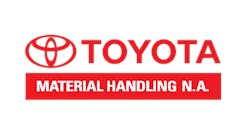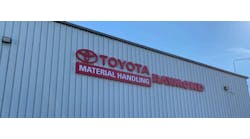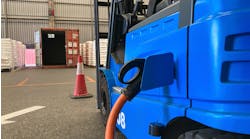We're all familiar with the universal symbols used in industry—the lightning bolt for high voltage, the skull and crossbones for poisons, flames for flammability, etc. There's probably no better icon for material handling and logistics than the forklift. In that one symbol you see the most flexible means of moving heavy loads from points A to Z and all points in between. In the best run facilities it says productivity, power and utility. But in the worst run facilities it can say cost, danger and necessary evil.
That opening paragraph could have been written 50 years ago. Even with all the advances we cover in this issue's cover story, forklifts are still largely powered either by internal combustion engines or lead-acid batteries. However, with alternative fuels driving R&D in the automotive industry for the last few years, early adopters in logistics have ventured into hydrogen fuel cells and 80-volt and lithium-ion batteries on the electric side and variations of propane and diesel power on the engine side.
Some of these end user pioneers were enticed by tax incentives. The government wants everyone to shrink their carbon footprint and has been willing to reward companies to do it. The propane tax credit is a perfect example. A 50-cent-per-gallon tax credit for propane and other alternative fuels is still available until the end of this year. It's been available for about five years, but many IC-owners have either been ignorant about it or have just ignored it because they didn't want to bother. And as you'll read in our cover story, we address the fuel cell side of incentives as well.
Toyota's Cesar Jimenez surmises that if fleet managers are ignoring incentives, it could be because they just don't see the ROI. "Only a few large customers were able to take advantage of the incentives as their fleets were large enough to bring down the overall cost of moving to this fuel source from conventional battery power," he says.
If you've been reading about the political drama surrounding the IRS lately, you might read another reason into why fleet managers ignore incentives. Who wants to deal with the IRS? That's a timely question these days, in light of allegations that the agency seems to have been playing politics in its pursuit of conservative groups. Politics has even bled into some of OSHA's site inspections.
I heard Catherine Engelbrecht, the politically active owner of a small Texas manufacturing business, interviewed on the radio recently, saying that OSHA popped in for an unscheduled audit last year. It couldn't find much to pin on her, so they hit her forklift fleet with a seatbelt violation. Oh, the trucks had seatbelts, but they weren't "the right kind," whatever that means.
Forget politics. There are still plenty of private-sector incentives in the works to inspire fleet owners to consider new power-saving options. Peter Harrop, chairman of IDTechEx, a market research firm, says both on- and off-road electric vehicles will be energy harvesting in a variety of ways. One of them that can already be seen in the forklift world is regenerative braking. These trucks take the energy used to lower loads and put it back into the battery.
"No longer will some of the energy be dumped into power resistors to be wasted because the battery cannot cope with the full surge of returned energy," Harrop says. "Better lithium-ion batteries, sometimes protected by supercapacitors across them or replaced by supercapacitors or supercabatteries, mean all the energy is recaptured."
I spoke with Brian Eichler, director of sales and marketing Asia Pacific at Maxwell Technologies (www.maxwell.com), makers of ultracapacitors used in cranes in port applications. He says these are often used for peak shaving and energy recapture, and they can also enable engine downsizing for large vehicles.
This is big-picture stuff for the humble but powerful icon of material handling and logistics. And for you I hope that icon is nothing close to the skull and crossbones.
Follow me on Twitter @TomAndel.


